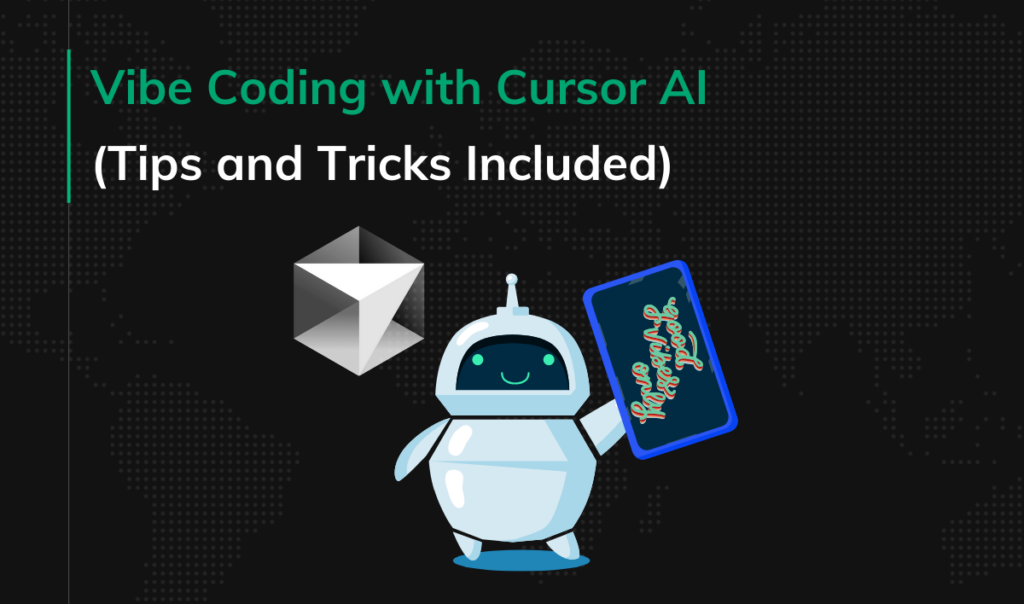UX Explained: What is it? How much does it cost? Do I need it?
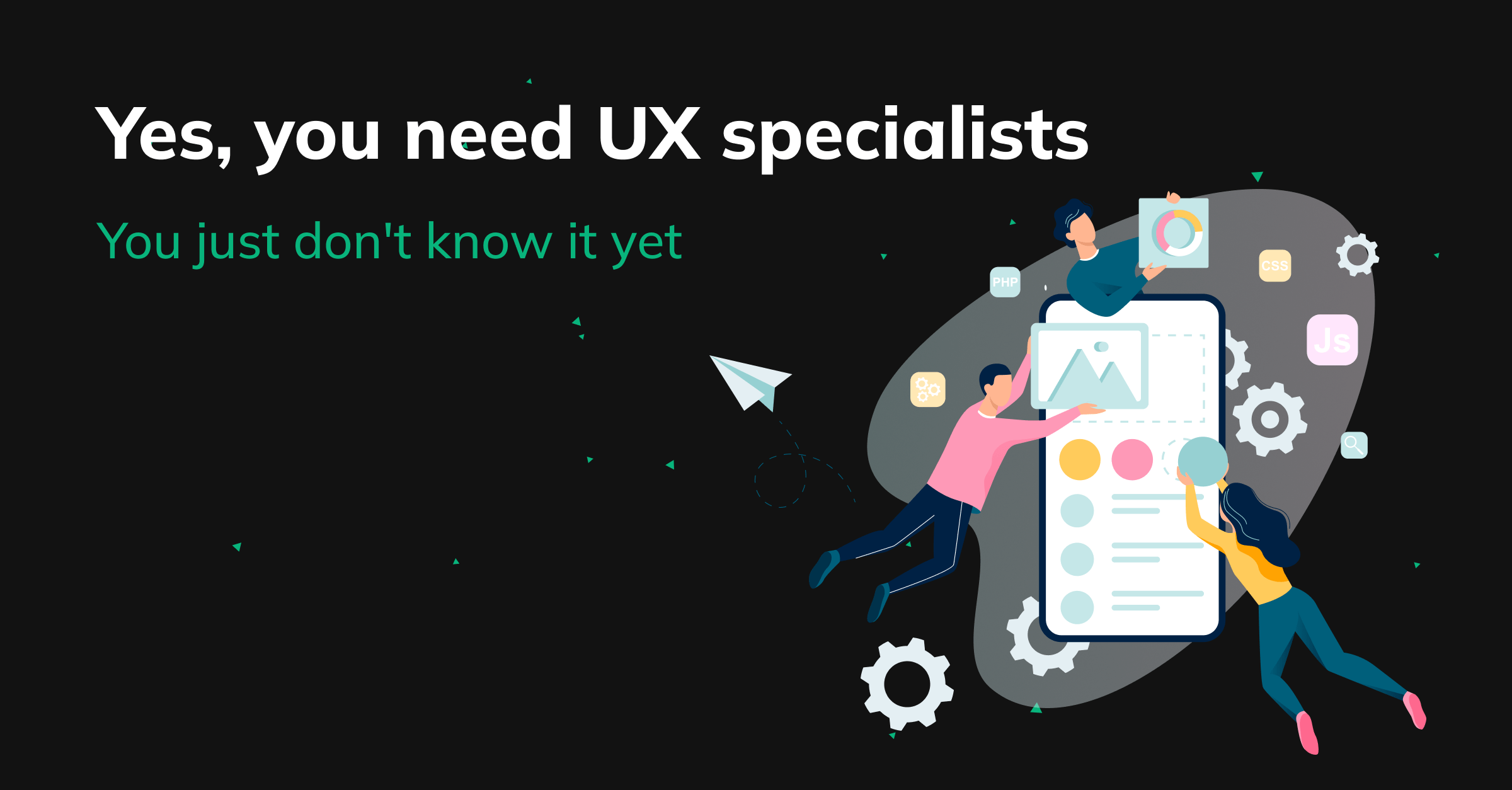
It doesn’t matter if you are a startup founder who’s just begun turning their ideas into reality or a Product Manager overseeing the development of a complex product with (too) many features. None will bring you any money without one crucial component: customer buy-in.
Only your potential, future or current customers are the judges who will decide if your solution is something they really need, desire, and use with pleasure. And only they will determine if it’s worth buying, coming back for more, and recommending to others.
We can all agree UX is essential to generate profit, but how can you implement it into your business?
UX Basics
UX Terms
To be clear, we first need to define some terms quickly and agree on how to use them. Yes, in the UX world, we have plenty of them, and sometimes there are used interchangeably, but they mean entirely different things.
- User Experience (UX) – the overall interaction (emotions, perceptions, preferences, and behaviors) a person has when interacting with a product, system, or service.
- UX Design – the process of designing and enhancing the user experience of a product or service. It focuses on creating meaningful and valuable user experiences by understanding their needs, goals, and contexts of use. User experience design fall under the umbrella term “user experience.”
- User Experience Research (UXR) – an investigation process that aims to understand users’ behaviors, needs, and preferences. It involves gathering qualitative and quantitative data through different research methods.
- User-Centered Design (UCD) – an approach that prioritizes the needs and preferences of users throughout the whole design/development process.
- User Interface (UI) – the visual and interactive elements of a product or system through which users interact.
- UI Design – the process of designing the visual appearance and layout of the user interface elements.
- UX writing – crafting clear and concise text within digital products to guide users and make their experience smooth.
Additionally, pay attention to how we use the words client and customer/user in this article. The first refers to people building digital products and hiring UX specialists (you). Users or customers are the people who use a client’s (your) product.
UX is in everyday things
Have you ever used a product (be it a mobile app or a website) that made you want to scream out of frustration?
Imagine this: you’re filling out a registration form. You’ve completed all the steps and typed in all the necessary information. Phew. You’ve reached the end of the form, and suddenly the system tells you there’s an error, and you don’t know where or how to fix it… Irritation overload.
We’ve all been there. Such form errors often make users abandon products, shopping carts, or registration processes. When this happens, companies lose customers to their competitors, who, as it turns out, can provide them with more intuitive products.
That’s UX: a user’s experience with a product. To be more precise: all the impressions, feelings, and emotions your customers may have when interacting with your brand, company, products, and services.
Why is UX important for developing products and services?

As stated above, a good user experience can make people want to use a product; but that’s not all. Great UX translates to more, often less obvious but significant, benefits.
- Better conversion rates
A positive user experience can increase conversions even by 400% (according to research by Forrester) – whether that means more sales, sign-ups, or other desired user actions.
- Reduced costs
Conducting user research, designing intuitive navigation, creating wireframes, and testing prototypes – simply a good UX process – can speed up development tasks, minimize the need for iterations, and improve team morale. As a result, it reduces both your internal and external costs.
- Competitive advantage
While UX design is no new concept, it has become a buzzword in the digital landscape. But does that mean that every product can provide an excellent user experience? Of course not!
This is where outstanding UX can set your business apart, giving it a competitive edge. By carefully catering to users’ needs and addressing their pain points, exceptional UX can boost customer confidence in a brand – they will be happy to return to your product and recommend it to their friends.
Moreover, choosing monetization methods with UX in mind allows you to generate revenue without alienating your users. By integrating monetization strategies seamlessly into the user experience, you ensure that users remain engaged and satisfied.
How is UX design different from UI design?
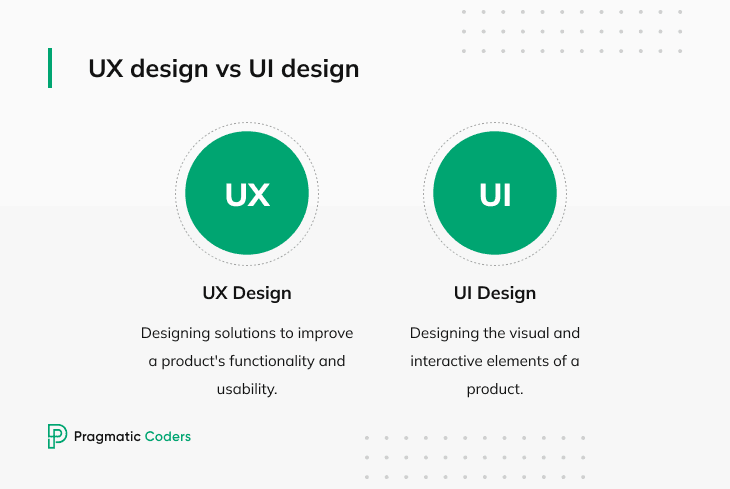
One of the most frequent questions asked when the discussion about UX design starts is: But how is it different from UI design?
UX and UI are both parts of the product development process, and they go hand in hand. When integrated, they complement each other in creating a great product.
UX design goes first – it focuses on observing people’s behavior, finding their needs, and solving user problems to create positive experiences with a product. After that, UI design can uplift the experience with an aesthetically pleasing interface.
While UI design focuses specifically on creating a product’s visual aspects, UX designers take a more holistic approach to the overall user experience by researching user needs, identifying pain points, designing solutions to meet users’ expectations, and improving the product’s functionality and usability.
Combining great UX and UI is the cherry on top that will WOW your users, and we can wow our users only once! Take a look at the data by Forrester. According to their research, 94% of a product’s first impressions are connected to the design. And did you know that 75% of users form their opinion about trusting a product by its appearance, and 40% will not use a website if it looks sloppy or chaotic?
As you can see, the data leaves no doubt: user interface and user experience design are critical aspects of creating digital products.
What’s the importance of UX research in the UX process?
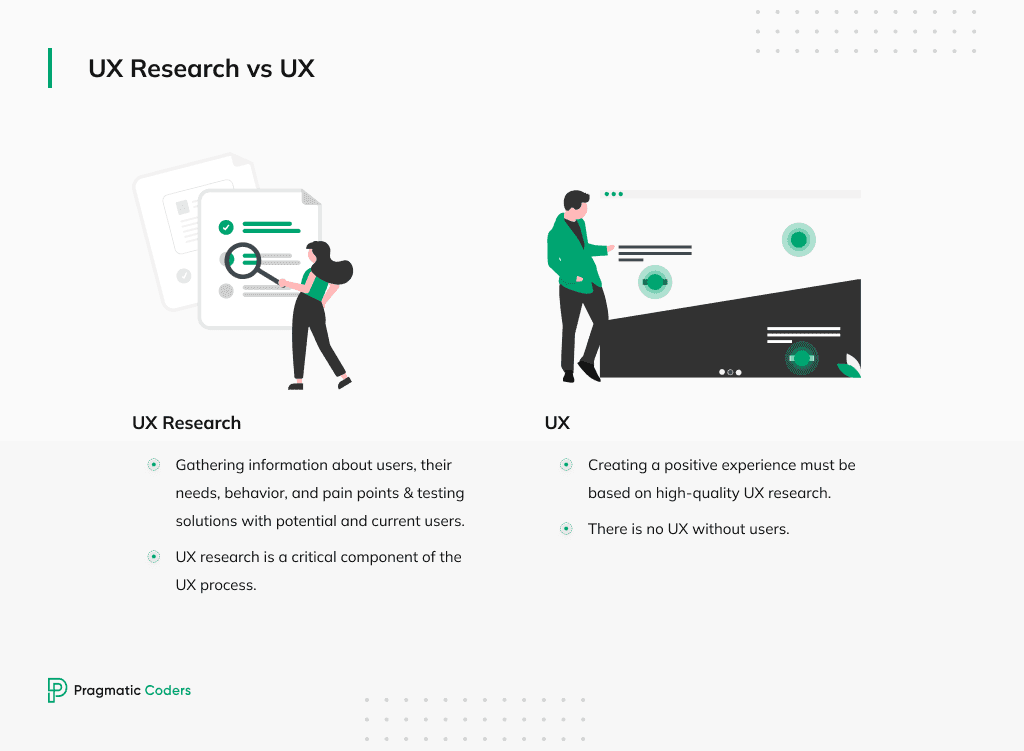
UX research is gathering information about users, their needs, behaviors, pain points, and their interaction with the solution itself. This information is then used to inform the whole design process and ensure the best user experience with a product.
UX research is a critical component of building new products with the user at its center (user-centered design). It helps designers and the rest of the product team understand their target audience and their needs. By conducting user research, UX specialists can identify areas for improvement and design solutions that meet those needs.
You can learn more about how to conduct the UX research process, who’s involved in it, and what usability testing is all about here 👉 How to conduct effective UX research
What does the UX design process look like?
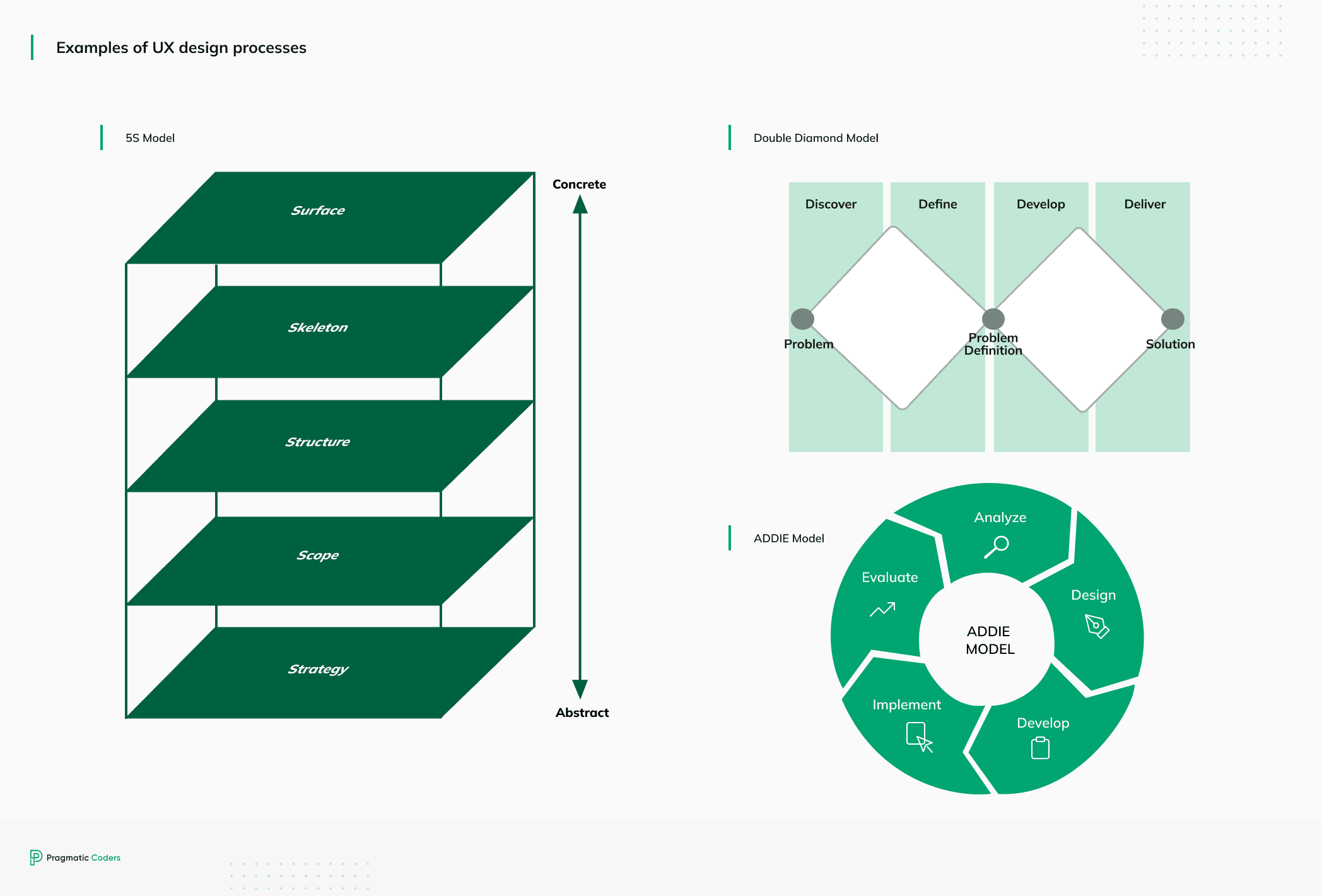
That’s a tricky question. In the UX world, there are a lot of terms and names – also for the models which describe the UX design process. When you go through the internet, you can find, for example:
- Jesse James Garret’s 5S model. He described it in The Elements of User Experience: User-Centered Design for the Web. It comprises five layers (or five S): Strategy, Scope, Structure, Skeleton, and Surface. The design process starts from the bottom plane – Strategy – and goes up to the Surface level.
- Double Diamond Model. This model is based on a four-stage process that includes the Discover, Define, Develop, and Deliver stages. The first diamond explores the problem, while the second focuses on discovering solutions.
- ADDIE model. It consists of 5 steps – Analysis, Design, Development, Implementation, and Evaluation.
Are there more UX design models? Sure, there are. However, no matter what model we follow or what we’ll call it, UX professionals practice user-centered design (UCD). A user is at the center of the solution-finding & generation process. Every decision designers make should be based on their knowledge of users & user data (that’s why UX research is so essential).
What does a User Experience Designer do?
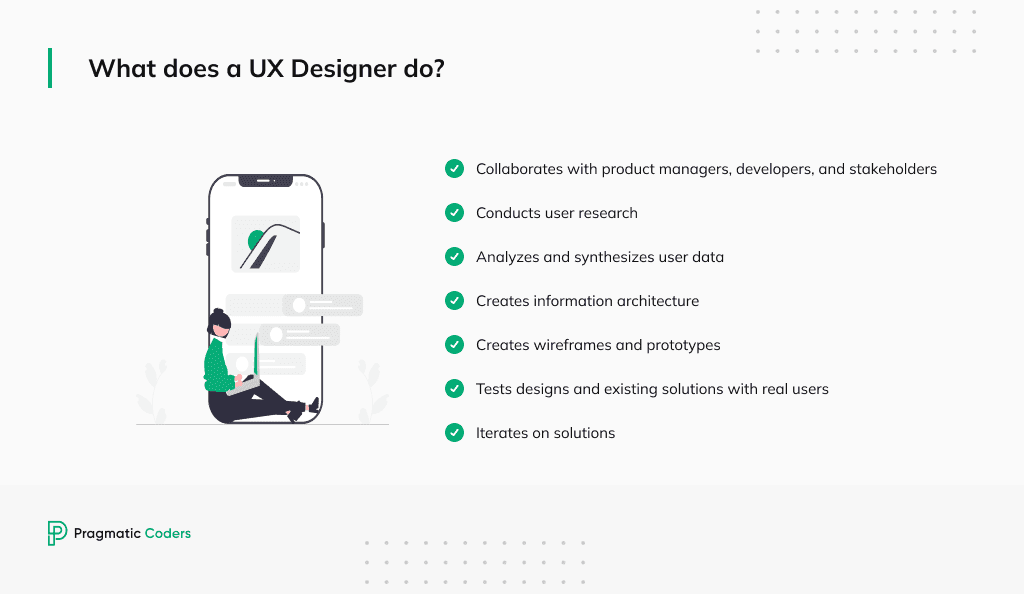
UX professionals focus on creating products and services that solve customers’ problems, meet their needs, and are intuitive, easy, and enjoyable. UX draws on many disciplines, including psychology, design, statistics, marketing, human-computer interaction, technology, and business.
That’s in general, but what do UX designers do on a daily basis? Following the approach of a user-centered design, UX specialists:
- Effectively participate in product discovery workshops to better understand a client’s needs and requirements and ensure a given product will meet business expectations.
- Conduct user research through interviews, observations, or usability testing. They are user advocates, so they need data about potential customers. For every product, UX specialists must find answers to these questions: Who are the users? What are their needs, motivations, and pain points? How do they use existing solutions? How do these solutions solve their problems now?
- Analyze and synthesize user data to inform design decisions.
- Work on information architecture (for example, of an app navigation). They need to ensure every piece of information is logically grouped so that users can quickly find the information they are looking for and realize their goals (like making a purchase).
- Create wireframes or prototypes to test them with real users and, in case of startup founders, present the future solution to investors.
- Iterate on designs based on feedback and testing results.
- Collaborate with UX writers, copywriters, or marketing team members on content elements.
- Collaborate with product managers, developers, and other stakeholders to ensure design solutions align with customers’ needs and support business goals and technical feasibility.
- Collaborate with UI designers to make sure the visual side meets the accessibility standards.
Do you need a UX Designer?
If you’re not a UX Designer yourself, then yes, you do need a UX Designer for your business. The belief that anyone can do UX research is a common myth.
UX designers won’t develop your product, but you need them to make it work.
They will help you with finding and picking the problem worth solving. They will help you execute the idea, test it with your potential customers, and collect feedback before developers start coding the solution. UX specialists are necessary to minimize the business risk of creating products nobody asked for.
Ultimately, you can have your developers build an untested product, but developing an app only to change it later because it doesn’t bring the desired effect wastes your money and time.
So, the question should rather be: Where is my UX Designer?
When should I hire a UX or UI designer?
If you are in the early stages of development, hiring a UX designer is crucial as they will help you define and refine your product’s features based on user research and feedback. This will ensure that your product meets the needs of your target audience, leading to a higher chance of success.
However, if you have already defined your product, you need a design system, and your focus is on its visual design, hiring a UI designer will be more beneficial.
In the end, it is essential to remember that both UX and UI design are crucial to the success of a product, but the timing of when to hire each role may differ.
What is the cost associated with hiring a UX designer?
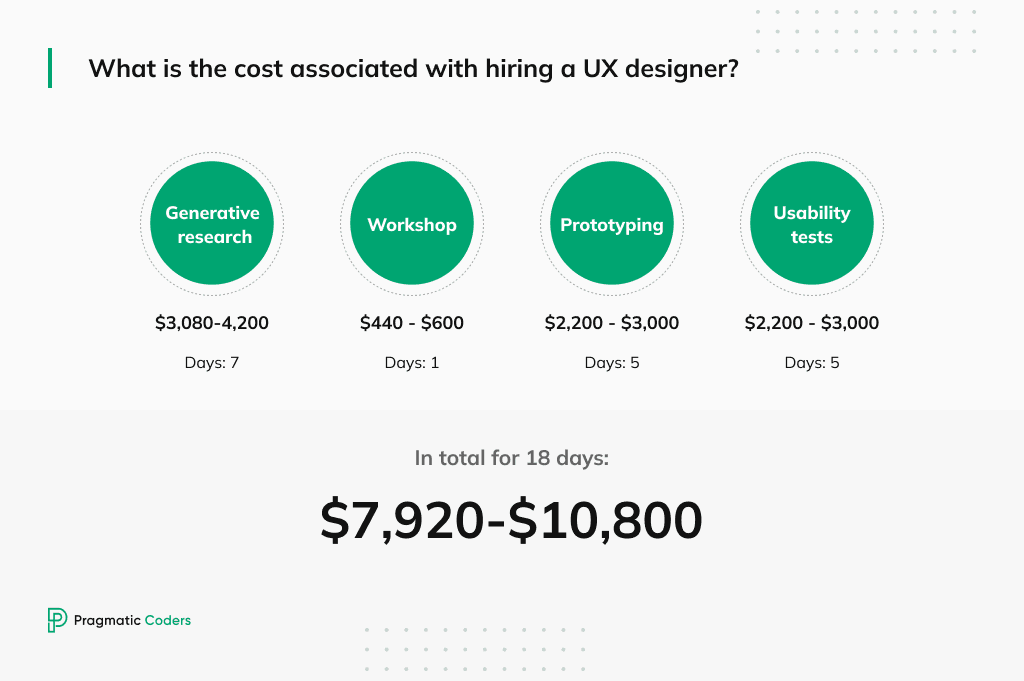
And now for, probably, the most important thing for a business founder: how much will it cost me to hire a UX designer?
Each business has different needs and budgets, so it’s impossible to give you a one-fits-all answer. However, we can estimate the costs if we create a hypothetical situation.
Suppose you aim to learn more about your potential customers and possess knowledge about your idea. You can create a simple WordPress landing page where you present your product & enable users (through a simple survey or form) to sign up for interviews/observation research.
You’ll be able to obtain traction and build a base of users you’ll later invite to test the prototype of your solution or solution itself. (Of course, UX specialists might use different methods for recruiting study participants.)
Now let’s assume:
- You’re hiring a UX designer from Central Europe. It’s 2023, and the current hourly rate is 55-75 USD (depending on seniority).
- They will conduct generative research (for example, user interviews with five people from one target group) and analyze the results. There are many kinds of research, and a good UX specialist will propose an optimal method to best suit your budget, time, and the type of data you want to collect.
Days: 7
Cost: $3,080-4,200
- They will participate in a Product Discovery Workshop to share the insights from the research, conduct user story mapping, and fine-tune the proposition value of your product.
Days: 1
Cost: $440-$600*
- They will create a mid-fidelity prototype of the main functionality (not the entire system) prepared for usability testing.
Days: 5 (Or more – it depends on how many mockups are necessary. Let’s stick to 5 for the sake of calculations.)
Cost: $2,200-$3,000
- They will conduct five usability interviews to determine how well the product suits the market fit (one day for creating interview scenarios and preparing for the interview, two days for the tests, and two days for analysis and summarizing the results).
Days: 5
Cost: $2,200-$3,000
*IMPORTANT: Remember that Product Workshops include not only UX Designers but also Product Owners and developers. For the workshop in the hypothetical situation above, we assume you would need a Product Owner for three days and a Full Stack Developer for one day. If each takes 55-75 USD for one hour, the overall cost of the Product Workshop would be $2,200-$3,000.
In total, hiring a UX Designer for 18 days will cost you $7,920-$10,800.
What MIGHT be the cost associated with NOT hiring a UX designer?
Now, let’s discuss another hypothetical situation.
Suppose you didn’t hire a UX designer, so there was no user research, competitor & market research, usability tests, or user-centered discussion. You think the product will fit the market but have no proof.
You hire four developers. Each works 8 hours a day. The hourly rate is, again, 55-75 USD. They’ve been building the product for one month (say, 20 working days), meaning you’ve already spent between $35,200 and $48,000.
Everything seems fine until you realize… that the product won’t work. Nobody is interested in it, and nobody wants to use it. You thought you were addressing a user pain point, but you had no research and no actual proof. The number of people who signed up on a waiting list is almost equal to 0. You were unlucky; it turned out the problem didn’t exist.
So, not having a UX designer on board costs you from $27,280 to $37,200.
Conclusions
To sum up, let’s answer the questions from the title:
What is UX design?
UX Design = creating products users want to use.
How much does UX design cost?
The cost massively depends on your project. With all the assumptions made above, hiring a UX designer for 18 days might cost you $7,920-$10,800.
Do I need it?
Yes!
Psst… Check out other product-related articles below:
- Are you sure your startup is solving the right problem? Engaging UX and UI designers in the process of building new products
- How to conduct effective UX research
- UI Design: An introduction to user interface design
- What does a Product Designer do? Product Design vs. UX easily explained
- Mastering App User Acquisition Strategies
- 3 reasons why you should hire a software partner with an internal UX team



